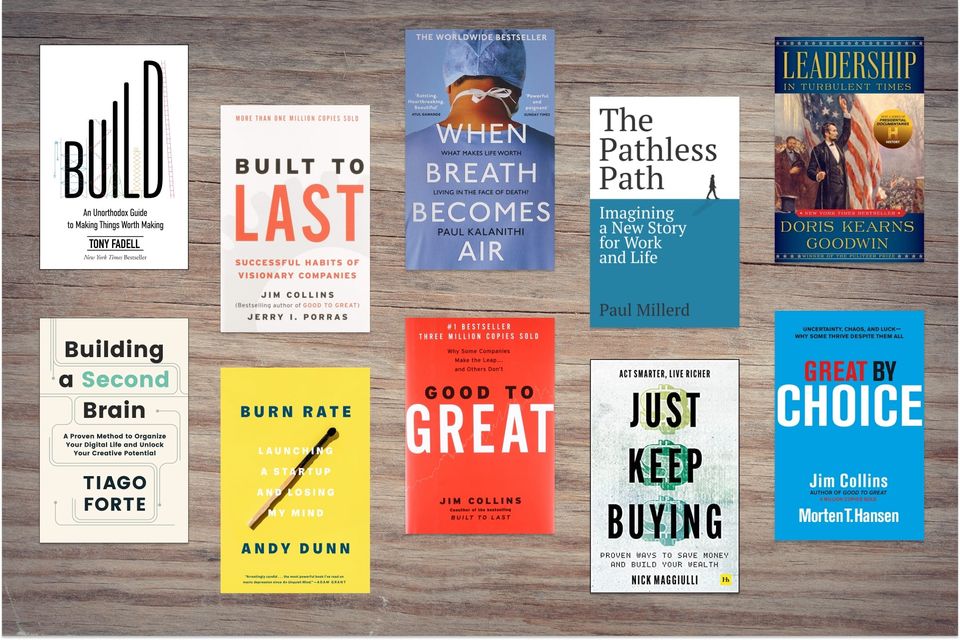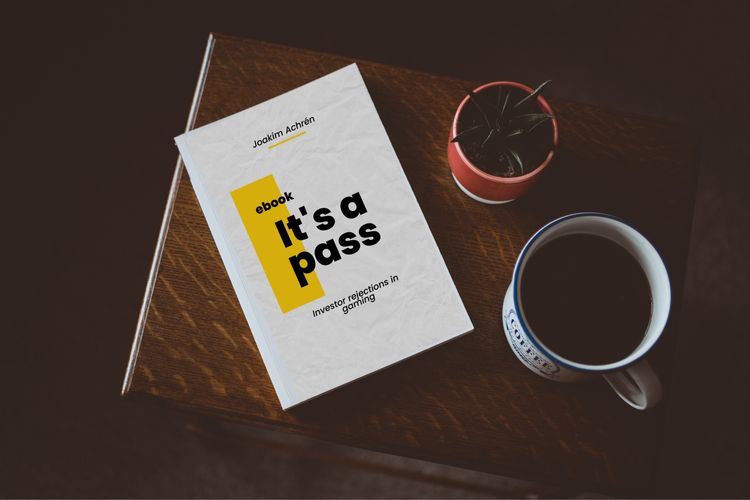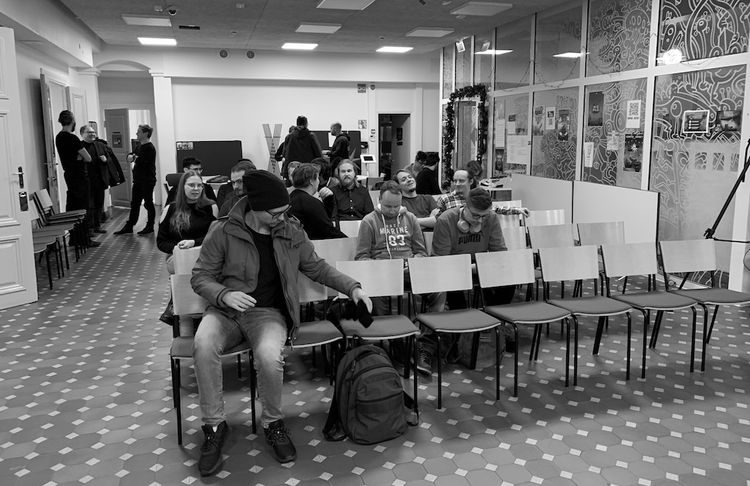EGD News #142 — 10 Favorite Books of 2022 so far

Sent on July 8th, 2022.
If you aren’t a subscriber to EGD News, you can subscribe here.

I’ve read some 34 books so far in 2022. In this piece, I’d like to share my favorite books so far from 2022 and what I’ve learned from these books.
The books aren’t in any particular order, and I’d be glad to hear that you’ve picked up some of these books to read over the summer.
Just Keep Buying by Nick Maggiulli
Lessons from this book:
Investing is for everyone. Everybody should invest, but it’s tough to get there. We don’t think about the consequences of long-term investment until we are in our late 20s or early 30s. By then, we are caught up in whatever we are doing.
The best time to plant a tree was 20 years ago. The Second best time is now. When to invest? Start right now and hold for ten, twenty, thirty years. Nick wrote in this book all the ways that you can believe that even the worst stock market crash will come back to profitability in about ten years.
Leadership in Turbulent Times by Doris Kearns Goodwin
An amazing book on four influential US presidents and how they navigated troubling times when they were in office and what prepared them for these challenges. Two lessons I picked up from the book are:
Leadership stems from a motivation to do work for a purpose. Modern internet use can help you build businesses that create purpose and meaning for people, a following that they are leading, with only one person at the helm. At some point, to scale, people need a team, and they need to lead the team. Can a person be the most excellent leader if they don’t have a team? If you have a one-person company with a purpose and can operate as a monopoly.
Storytelling is key. Like Abraham Lincoln and Franklin Roosevelt, Lyndon Johnson knew that people were “more easily influenced” by stories “than any other way” and that stories stood remembered far longer than facts and figures.
Built to Last by Jim Collins
The first book from Jim Collins on building great companies. The key lesson I picked up from the book:
Clock builder, not time-teller: The leader who focuses on “building the clock” will do much better than the one who focuses on “telling the time.” It’s like starting a games studio but only focussing on building games instead of building an enduring games company. As Collins says about Wal-Mart founder Sam Walton:
By his early twenties, Walton had pretty much settled upon his personality style; he spent the bulk of his life in a never-ending quest to build and develop the capabilities of the Wal-Mart organization, not in a quest to develop his leadership personality.
Jim Collins in Built to Last, on Wal-Mart founder Sam Walton
Good to Great by Jim Collins
In my humble opinion, this is the best Jim Collins book on building great companies. It’s actually a very easy read and full of insights. Here are two lessons I picked up from the book:
CEO as a steward. The CEO of a great company knows that it’s not about them, and they know that to build a great company, they need to have immense humility and humbleness to want to build something that will become larger and more lasting than themselves.
Right people on the bus. Why it’s so important? Jim Collins writes, “When I asked how Mockler, the CEO most responsible for Gillette’s transition from good to great, accomplished all of this, the executive said, ‘Oh, it really wasn’t that hard for him. He was so good at assembling the right people around him and putting the right people in the right slots that he just didn’t need to be there all hours of the day and night.’”
Great by Choice by Jim Collins
The third major book from Jim Collins on building great companies. Here’s one lesson that I picked up from the book.
The role of preparation: The best founders don’t leave anything to luck, but they emphasize preparation so that when a lucky moment happens, they are prepared to capitalize on that luck, be it good or bad luck. Jim Collins talks about the concept of dealing with luck as leaders getting the most return on luck.
The Pathless Path by Paul Millard
This is a book about Paul, who leaves his work in a management consultant company to pursue the pathless path. Here are the lessons that I picked up from the book:
Breaking the conventional: So much of how we think of work is a relic of the industrial era. Work 8 hours, have titles, and report to people. This book talks about what things can be like, if we’d go back to thinking about work from a pre-industrial era standpoint, but with everything that modern technology enables us to do.
Change from default to pathless: ”The pathless path is an alternative to the default path. It is an embrace of uncertainty and discomfort. It’s a call to adventure in a world that tells us to conform. For me, it’s also a gentle reminder to laugh when things feel out of control and trust that an uncertain future is not a problem to be solved.”
When Breath Becomes Air by Paul Kalanithi
This is an extremely thoughtful book to read. Here are two things I picked up from the book.
Life, identity, soul: Can we go through life without examining our lives? Paul Kalanithi is a neurosurgeon who discovers that he has terminal lung cancer. In this book, he examines his life in a way that gives meaning to life, examining the creations of stories, things that will last when we die.
What it’s like to die: ”Death may be a one-time event, but living with a terminal illness is a process… On diagnosis, I’d been prepared for death. I’d even felt good about it. I’d accepted it. I’d been ready. Then I slumped into a depression, as it became clear that I might not be dying so soon after all, which is, of course, good news, but also confusing and strangely enervating.”
Burn Rate: Launching a Startup and Losing My Mind by Andy Dunn
What an amazing entrepreneur story. Andy is of similar age as I am (Gen X) and he started doing startups at the same time as I did. But seems like he had a much harder time at it. Here are a few things I picked up from the book:
Doing a startup is great, but how are you? I’ve been writing pieces about my mental struggles with burnout on EGD. Still, after reading this book, it felt like entrepreneurs can be in a totally different world of pain, with more severe mental illnesses like bipolar disorder.
The silence on mental illness. It’s not cool to talk about your mental problems casually. It can be disturbing for people. I hope that this book will make it more of a casual topic. I see people ghosting me by email, and I often think that these people might be having a breakdown. Things are hectic in startups, and I wish we’d talk about the consequences to people’s mental well-being.
Build by Tony Fadell
The most useful startup and product-building book that I’ve read in a while. There are so many lessons that I’ve picked from this book. Here are two things I want to mention about the book.
A comprehensive guide on making it in tech startups: When I set out to write my book “Long Term Game,” I wanted to tell everything I could about making a games company. Tony Fadell has taken this kind of writing to a whole new level. This book has it all and more.
Perspectives on leadership: ”The CEO and executive team are mostly staring way out on the horizon—50 percent of their time is spent planning for fuzzy, distant future months or years away, 25 percent is focused on upcoming milestones in the next month or two, and the last 25 percent is spent putting out fires happening right now at their feet. They also look at all the parallel lines to ensure everyone keeps up and going in the same direction.”
Building a Second Brain by Tiago Forte
I’ve long followed Tiago Forte since I took his Second Brain online course in 2019. Two things to mention about his book:
Having more insights when it’s not all in your head. As I wrote in a previous EGD News piece, I’m consuming lots of content, but I diligently try to keep my notes in order and systematically try to create new insights from what I’ve stored in my “second brain.”
The book captures why a second brain is helpful for all entrepreneurs. ”You can’t fail because failure is just more information to be captured and used as fuel for your journey.”
Bonus: utilizing Kindle highlights
Last week on EGD News, I shared how I take notes from reading with Kindle. If you didn’t get a chance to read that piece, here’s a quick summary.
In the video, I describe how I take notes on Kindle and how I process the notes.
- Highlight in text phrases; try to add a note to the highlight
- Readwise transfers them to Roam Research into a highlights doc
- I create a Literature Note where I distill the notes down to the essential ones
- Based on the new things that I’ve learned from the book, I create Permanent Notes
The literature and permanent notes are the best way I’ve yet to encounter to make any sense of book highlights. I can use the permanent notes for my work in creating content for EGD and when I’m helping founders as an investor.
I’ll revisit my note-taking process in the future, as I believe it will be a constantly evolving process—becoming more effective as a “Second Brain.”
That’s it. Happy reading!
Get my book, “Long Term Game: How to build a video games company” from Amazon. Available on Kindle, audiobook, and paperback. Check it out!
Some useful templates from EGD
- Investment memo template
- Cash flow projection template
- Ebook: Advanced Retention Metrics
- Convertible note
- Shareholders’ Agreement
- Teaser deck template
- and more
Quote that I’ve been thinking about
Your mind is for having ideas, not holding them.
— David Allen
Sponsored by ZEBEDEE
By building infrastructure on top of the Bitcoin protocol, ZEBEDEE is creating interoperability between different developers and studios, allowing the entire games industry to share the same open standard for sending and receiving value. Find out more!
Happy weekend!
New articles that are worth the read will be shared again in August! I’m at the cabin now and minimizing the amount that I look at on Twitter and LinkedIn. I hope to share more interesting pieces when I’m back in the city 🙂
I hope you have a great weekend!
Joakim





